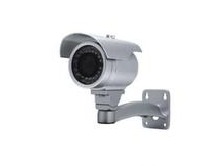The present invention provides a multifunctional pull faucet, comprising: a faucet body, a drawing part is provided at the water outlet port thereof, and the drawing part is connected to a main channel, wherein at least three are provided in the faucet body A branch channel, and the three branch channels are all connected to the main channel. A multifunctional pull faucet provided by the present invention, wherein the hot water channel, the cold water channel and the water purification channel (pure water channel) are all connected to the main channel , And the main channel is connected with the drawing part on the main body of the faucet, so that the drawing part can obtain the water quality (hot water, cold water, purified water or pure water) required by different users, thereby improving the user experience, and , By integrating the hot water channel, cold water channel and pure water channel (pure water channel) into the main channel, the internal structure of the faucet is simplified, and the production cost of the faucet is reduced.. Single Handle Faucets,Pull Out Laundry Faucet,Pull Out Shower Handle,Stainless Steel Single Handle Faucets Yuyao Zelin Sanitary Ware Co., Ltd , https://www.kitchen-sinkfaucet.com In recent years, everyone is talking about IP, SDI HD, and some people have said that the simulation will exit due to its own performance limitations to meet the needs of the security market. However, does the analog camera really exit the security market?
In recent years, everyone is talking about IP, SDI HD, and some people have said that the simulation will exit due to its own performance limitations to meet the needs of the security market. However, does the analog camera really exit the security market?
One of the biggest bottlenecks encountered by network cameras in video network applications is the transmission bandwidth. Although current network cameras already have data flow control technologies such as H.264 compression and dynamic code streams, it is undeniable that higher network quality is required to achieve higher imaging quality, and millions of transmissions are performed according to current compression technologies. The pixel image is no problem on the LAN.
In the current wide area network transmission mode, the actual uplink bandwidth is generally around 512K, and the cost of the data line or optical fiber is indeed high. The upstream bandwidth can only transmit one quality D1 real-time video, but as the technology continues to advance, the popularity of megapixels for network cameras is already within easy reach. Transmission becomes a big problem that plagues network imaging because we cannot The camera is equipped with LAN or fiber optics.
After many years of application and development, the analog surveillance system has matured. The market demand has not yet reached a saturation level under the stimulation of growth in the security market. It is especially suitable for small and medium-sized projects. Therefore, analog cameras will occupy a certain amount of market space. .
In the application of surveillance cameras, analog surveillance products still occupy an absolutely dominant position. After all, after years of development, the mature technology market is also stable, and its technology is continuously improving.
Analog camera output standard CVBS signal, fully compatible with the original analog SD system, transmission media, transmission distance, construction, etc. have not changed, only need to replace the analog camera.
In terms of construction, the engineering contractor does not need to change the construction method, and does not require additional training as the network camera does. It conforms to the original work habits.
The analog signal is fully compatible and can be easily located and eliminated in the event of a fault.
The high-line analog camera continues the advantages of the simulator system without coding, no delay, and more realistic image restoration.
Features rich, stable, professional, intelligent will be the development direction of analog HD cameras. In the domestic network environment, compared with the network monitoring system, the stability of the analog monitoring system is an advantage, and it is also necessary to maintain this advantage in order to occupy the market share.